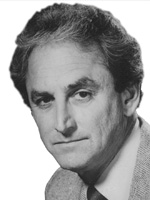Tesla achieves best safety ratings ever without gimmicks
The test for defective design is technological feasibility
This is not a commercial for Tesla. But their new model S set a new record from the National Highway Safety Administration (NHTSA) for the lowest likelihood of injury to occupants in all categories ever. It got five stars in everything. In fact the results were off the charts and averaged 5.4. If they can do it with engineering, why can’t the rest of the manufacturers? Remember, the test for defective design in the law of products liability is technological feasibility. It is far better to present a widely sold product as the standard instead of some theoretical or experimental product. And your expert does not get hammered as trying to sell impractical solutions.
The good news is that Tesla achieved five-star ratings across the board without gimmicks like controversial airbags (see Booth, Air Bags Kill, Plaintiff Magazine, March 2012). The testing took into account the probability of injury from front, side, rear and rollover accidents.
Front Collisions: The Tesla does not have a front engine, thus creating a much longer crumple zone to absorb a high-speed impact. The longer the crumple zone, the more time to slow down occupants at loads that do not cause injury. The Tesla motor is about one foot long and is mounted in the back over the rear axle. This is a far better solution than trying to cushion the blow with frontal air bags, which add nothing to seat belts and are deadly with unbelted occupants.
Side Collisions: Tesla has multiple deep aluminum extrusions in the side rails that absorb energy similar to the Apollo Lunar Lander. This is not surprising since the founder of Tesla (Elon Musk) is also the founder of the only successful civilian space venture (SpaceX). The independent study discussed in my 2012 article on Air Bags concluded that in big impacts, side airbags offered nothing and are exceptionally dangerous to children. It is far better to strengthen the side rails than add a pillow to the occupants who have been crushed by intrusion.
Rear Collisions: Tesla offers a double rear bumper for certain applications. Again, they take the approach that it is better to have a stronger car.
Rollovers: Rollovers have plagued the auto industry for decades, especially since the advent of the narrow wheel base and top heavy SUVs. The Tesla battery pack is mounted below the floor pan. This provides a low center of gravity and exceptional handling and safety.
Roof Crush: In recent years, roof crush has been a huge problem because of the increase in rollover accidents. Being belted and having overhead air bags deploy does no good if the roof crushes. Tesla uses a center pillar attached with aerospace grade bolts.
Fires: No Lithium-ion battery in a Tesla has ever caught fire. This must be compared to gasoline powered cars, which carry what amounts to a gasoline bomb in the rear.
Over the years, we have litigated hundreds of product-liability cases. The nirvana for these cases is to find a product that is actually sold anywhere in the world that solves the alleged defect in the defendant’s product and would have prevented the injury or death. We initially comb the patent records, then survey other products. Often there is nothing out there which incorporates the solution being promoted by the plaintiff’s experts. In auto-defect litigation, the government’s seal of ultimate approval in all categories is a godsend.
Larry Booth

Larry Booth is the founding member of the firm of Booth & Koskoff. Has has tried hundreds of jury trials. He was inducted into the Inner Circle of Advocates in 1973 and was President of CAALA in 1978. He is the co-author with his son Roger Booth of Personal Injury Handbook (James Publishing).
Copyright ©
2025
by the author.
For reprint permission, contact the publisher: Advocate Magazine
